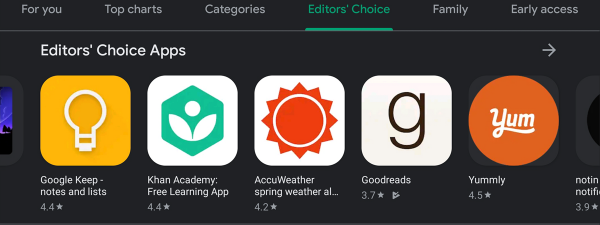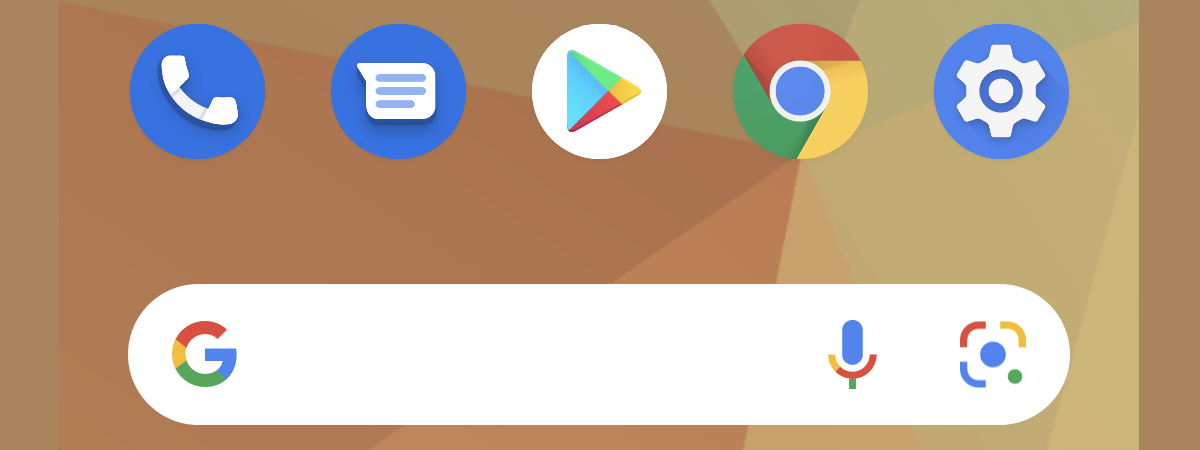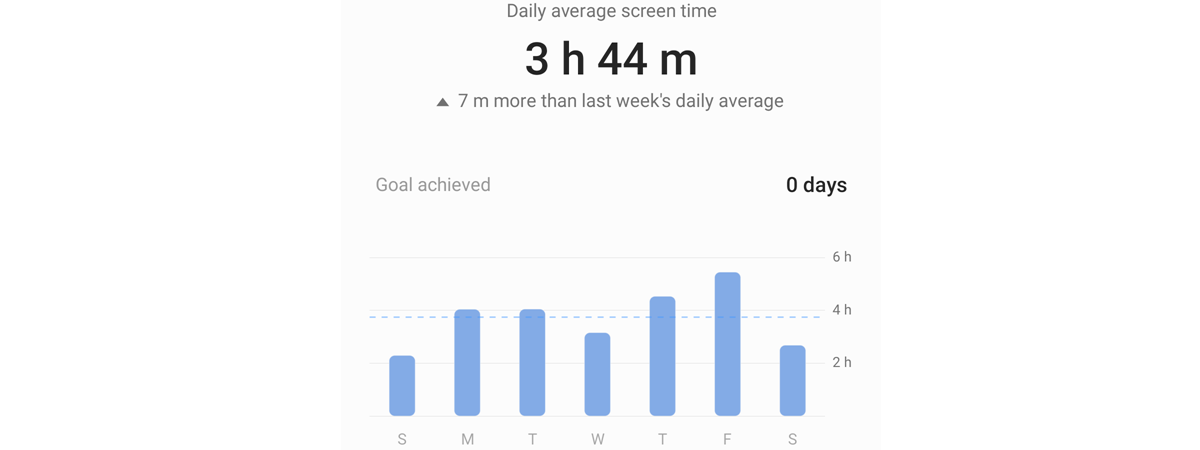
Android smartphones come in various shapes and sizes, with different hardware and connectivity options. But there’s one trait that many of them have in common: they suck. Don’t you often get the urge to say “this phone sucks” when looking at yours? I’m not just throwing shade at Android compared to iPhones; many are objectively bad. Blame it on the Wild West of Android and the free-for-all app development. I have survived years of Android torture, and over time, I’ve come to understand that the true purpose of this open-source operating system might just be to annoy you into splurging on an iPhone. Here are eleven reasons why even the latest Android phones might not be to your liking:
Software
Android is an open-source operating system, and like all things open-source, it benefits from a huge community of developers and programmers ready to innovate and create awesome content. It also “benefits” from a complete lack of regulation and a disregard for best practices. This leads to a fragmented mess, with each smartphone manufacturer personalizing their smartphone software to death. First, let’s make things clear:
1. Android smartphones don’t truly exist (except for the Google Pixel lineup)
One of the main reasons why Android phones suck is that there are no Android phones. Yes, the struggle is real: finding an Android smartphone is like trying to find a unicorn. Except for those OG Google Pixel phones, which are the cool kids who stick to the basics. Virtually every other “Android” smartphone thinks it’s special, bragging with a slightly different build, version, and implementation of the vanilla Android operating system. That’s another way of saying that most of them come with heavily modified user interfaces and terribly uninspired names, such as One UI (made by Samsung), HyperOS (formerly known as MIUI, made by Xiaomi), and ColorOS (made by OPPO). Is this a Masterchef competition? Are we ordering sushi, or are we talking about the Android user interface? 🙂
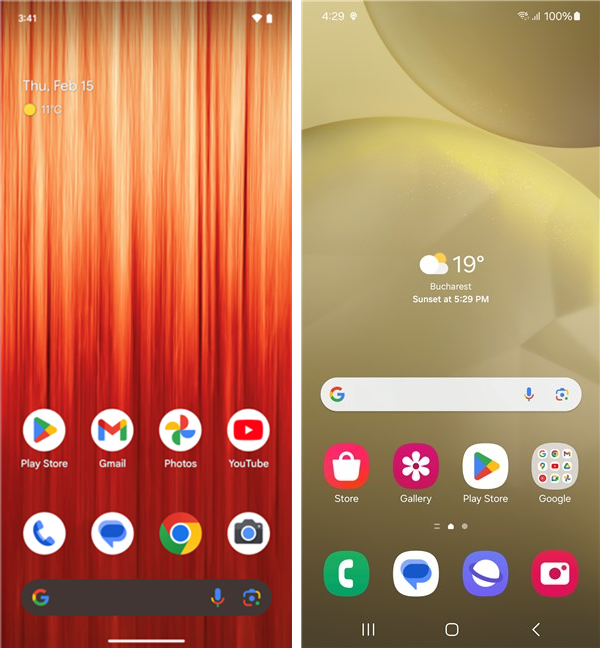
The clean Android 14 interface (left) versus One UI 6.1 (right)
The worst part? These customizations are often dumb and buggy, tainting the goodness of the vanilla Android interface. The chaotic competition between different manufacturers feels like a dysfunctional family reunion where everyone’s arguing about who has the better Android… which leads me to the next reason why Android smartphones suck:
2. Operating system updates are slow to come by
Google conscientiously releases an Android version each year, sometimes with tremendous improvements over the previous one. But while the Google Pixel smartphones get their updates from day one, all other Android smartphones receive the update months or even years after the original release.
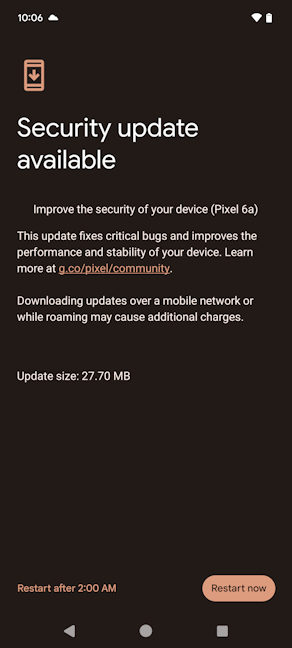
Google Pixels are the only Android phones to get their updates in a timely fashion
It’s been a while since I’ve wondered why my Samsung S21+ is not a good phone. No more: while my colleague, Ciprian, got Android 14 (and One UI 6.0) on his Galaxy S23 in late October 2023, I got it almost four months later. And that’s Samsung, which handles updates better than most other Android manufacturers. I don’t even want to think about the poor souls who have to wait for a year or more before getting any major Android update on their phones. Sometimes, I really think this is like waiting for your grandma’s cookies to finish baking - it takes forever to get a taste. 🙂
Unfortunately, all this Android politics mess has to do with two things:
- The sheer amount of different hardware configurations means that every new Android version needs to be thoroughly tested by each manufacturer before being pushed to their respective devices.
- Manufacturers just can’t resist putting their own spin on things, so they need time to ruin the Android experience by placing the aforementioned user interface customizations on top of a perfectly fine operating system.
The best you can hope for (if you aren’t rocking a Pixel smartphone) is a few months before the latest Android version is available for download on your device, but even then, you may have a bad time.
3. Frustrating software support
Don’t worry, though. The painful wait for a new Android version for your smartphone won’t become a habit. And that’s because most Android smartphones don’t get too many major updates. While iPhone users benefit from 5 to 6 years of updates (my iPhone 12 mini from 2020 started out with iOS 14.1 and was just updated to the latest iOS, version 17.3.1), Android smartphones usually go through two or three major operating system updates before becoming unsupported (with some notable exceptions like the latest Samsung Galaxy smartphones).
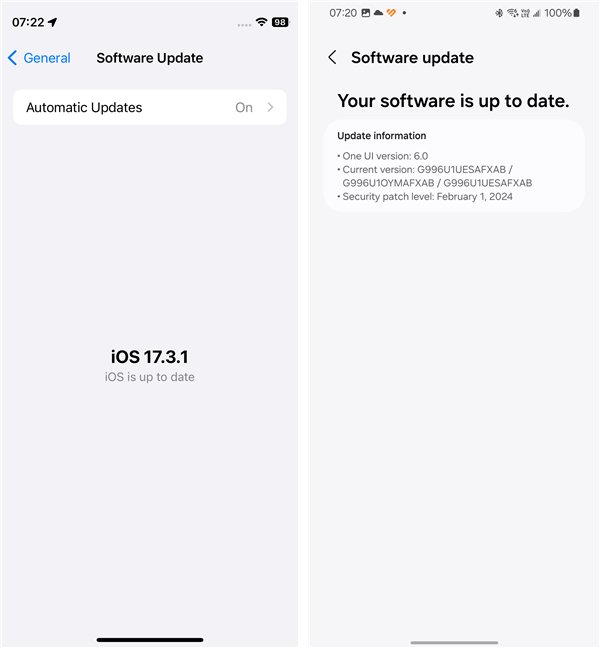
iPhones get OS updates for much longer than Androids
Basically, there’s a significant chance that your Android smartphone’s software support expires faster than your hamster. And while your hamster might be gone, your smartphone may be perfectly fine in terms of hardware in two years’ time, but its geriatric Android will struggle like a 1-liter engine in a sports car.
This issue is even bigger for cheaper Android phones. Because their profit margins are smaller, manufacturers tend to provide weaker software support, for shorter periods of time, and focus mostly on their more expensive models, which are more lucrative. If you’re curious, here are the phone update policies from every major Android manufacturer.
4. The Android app ecosystem is (still) a mess
Yes, the Google Play Store has roughly 2.5 million apps (at the end of 2023), but how many of them work specifically with your device? And out of those, how many work without crashing every now and then? Android apps are notoriously bad compared to their iOS counterparts, and that’s partly because Apple has stricter regulations when it comes to app functionality and quality. Meanwhile, Google’s laissez-faire attitude concerning the Play Store is like an invitation for your cat to organize your socks drawer - chaos.
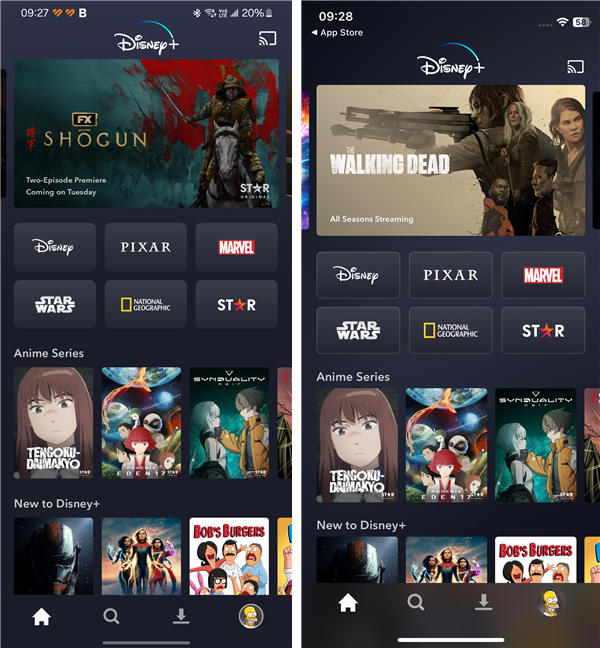
The Disney+ app on Android (left) versus the same app for iPhone (right)
To be honest, though, developing an app for Android devices is a nightmare since both the hardware and the operating system the app should run on can vary wildly. Designing an app that works with both a Samsung Galaxy S10 (made in 2019) running Android 12 and a Google Pixel 8 that runs on Android 14 is not an easy task, so it’s no wonder that many apps don’t support a wide range of devices and operating systems. To make things worse, the loose regulation of apps in the Google Play Store means that, more often than not, you will find a few apps in there that are outright malware. Did I mention that many smartphone manufacturers also have their own stores, with even more shady content? And don’t even get me started on the risks of sideloading (installing apps from other sources).
5. No reliable backup for many applications
It’s no surprise, then, that many applications developed for Android don’t have reliable means to be backed up. Some Android smartphones rely on Google Drive to have their back, while some prefer playing it solo with their own cloud-based service. The problem is none of them seem to understand the concept of a complete backup.
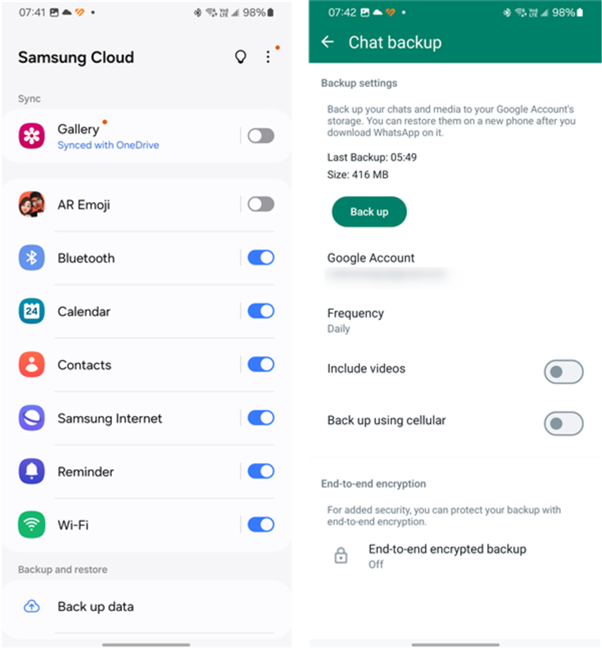
Android smartphones and apps use different cloud backup solutions
If you’re an avid gamer and want to upgrade to another smartphone, prepare for disappointment, as for many of your games, the saves, achievements, and settings won’t be transferred to your new device, unless those games are cloud based.
6. Google Play Store? More like the Google Ads Store!
I know what you’ll say: the classic “Google Play Store has a ton of free apps!” Yeah, I heard that argument before. But nothing is really, truly free, is it? It’s like getting a free puppy - cute at first, but soon you realize you’re in for a ride. What you save upfront will come back later to haunt you in the form of frustration, time, and finger workout, tapping away annoying ads that plague many free apps available in the Google Play Store.
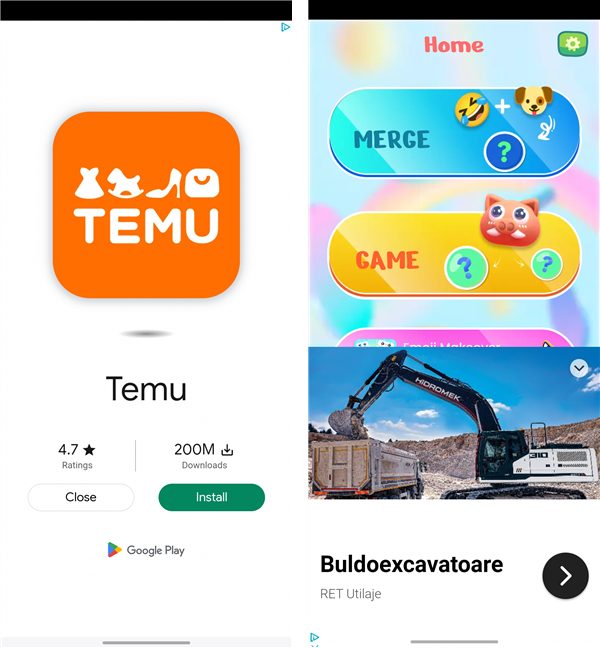
Some apps have ALL the ads
Hardware
While their software is a definite mess, hardware-wise, Android smartphones are nothing short of a lottery. They are like a box of chocolates, so you never know what you’ll get when you purchase a new device.
7. Users unwillingly become lab rats
Innovation is great! It leads to amazing concepts, and it’s what makes us excited about new releases. However, innovation at the expense of the consumer is not innovation; it’s experimentation. Take the foldable screen, for example. It’s really an amazing feat of engineering and an excellent solution to having a small portable device with an even bigger screen.
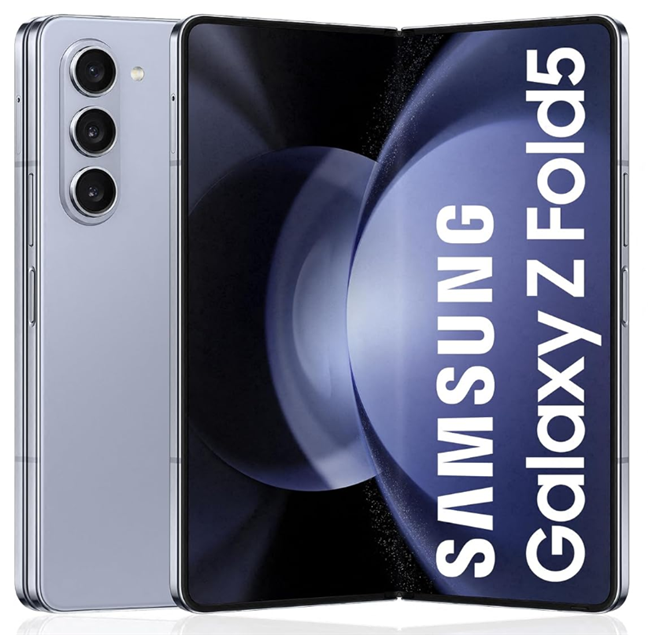
The Samsung Galaxy Z Fold 5
Samsung phones might be overrated, but just a few years back, this company boldly went where no one had gone before and launched the first mainstream smartphone with a foldable screen, the Galaxy Z Fold. Since then, new versions have come out with cool designs and plenty of shiny new features - smartphones that can wow your coworkers and friends. For a while… until the hinges break, screens stop functioning properly, or their protection foils peel off. And yes, some of these issues may be covered by warranty, but repairing such phones is problematic, and it usually takes a long time. The warranty certainly doesn’t cover your disappointment, time, and frustration.
8. Same smartphone, different specs
Sometimes, buying an Android smartphone is like navigating a tech maze. Not only because hundreds of models are launched each year, but you can even find the same smartphone, rocking the same name, from the same manufacturer, but surprise, surprise - they have several different hardware configurations. And I’m not talking about simple things like storage size. I’m talking about the chipset, RAM size, and the presence or absence of vital features, like NFC. Theoretically, each region gets the same variant, but with globalization doing its thing, you might end up with a phone with different specs than the ones you wanted. Take the Samsung Galaxy S24, for example. It can have either a Qualcomm Snapdragon chipset (in USA, Canada, and China) or an Exynos chipset (everywhere else). It’s like playing musical chairs with chipsets…
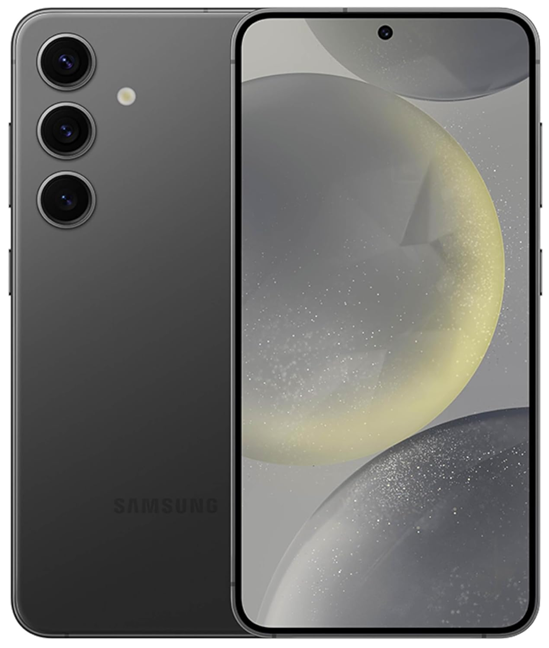
The Samsung Galaxy S24
Therefore, if you live in Europe and you buy the Galaxy S24, you’re not getting the same phone as someone who buys it in the USA. And the experience you get will vary, sometimes wildly. This issue does not apply only to Samsung but also to other major manufacturers.
9. Smartphones that launch only in certain regions or countries
During the last decade or so, we’ve been accustomed to seeing manufacturers launch smartphones selectively in certain regions or countries. I’ve come to understand that these decisions are made based on a multitude of factors, including but not limited to market demand, network compatibility, partnerships, competition, and supply chain and logistics. Maybe even based on the people’s preferences in certain regions… However, I can’t wrap my head around the fact that some manufacturers these days have also started to release some Android smartphones exclusively for a region or country. And yes, that’s usually China if you’re wondering. Take Xiaomi, for instance - which makes some of the best Android phones around. The Xiaomi 14 series comes with top-notch hardware and some excellent features. But, for whatever reasons, the Xiaomi 14 Pro appears to not make it on the international scene. Instead, the company appears to want to sell it only on the Chinese market. What’s that all about? Is the West not as attractive as the East?
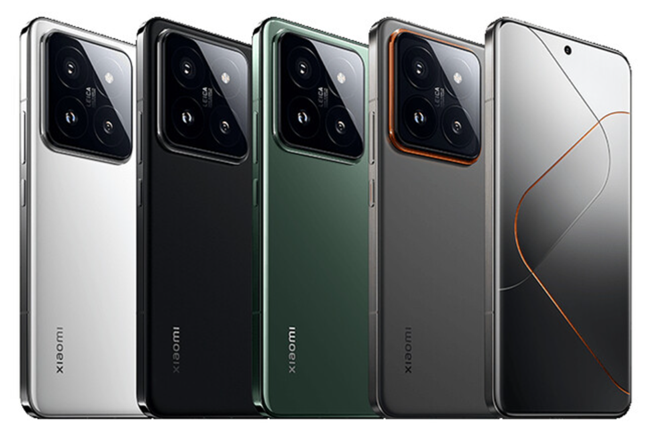
The Xiaomi 14 Pro might be a China-exclusive Android phone
Another approach used by OnePlus and other manufacturers is that they initially introduce certain smartphone models in China and only make them available to a global audience after several months. It seems that the days when the USA and Europe were the first to get access to the latest devices are a thing of the past.
10. (In)efficiency
When compared to iPhones, Android smartphones have lower efficiency, both in terms of resource management and energy consumption. iPhones have tiny batteries, but their real-life usage proves they can last just as long as the average Android smartphone on a single charge. Apple is like a puppet master, pulling the strings of both hardware and software, so they know how much energy each app consumes. Thus, they are able to tweak the battery life and the operating system accordingly. In Android, there’s too much chaos and confusion with everyone doing their own thing, so replicating this level of control is frankly impossible.
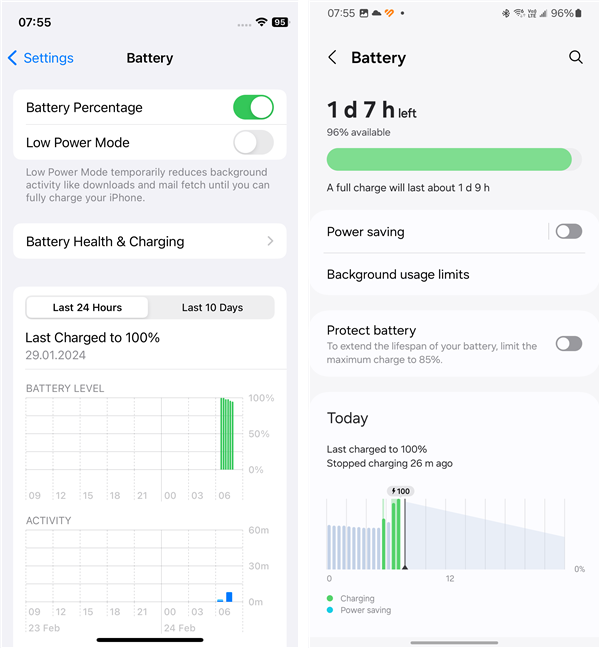
Though you couldn't tell, the iPhone (left) is more frugal than an Android phone (right)
11. Brands come and go
Apple fans are just special. They absolutely love their iPhones, with all their flaws. And I can relate, honestly. Back in the day, I loved HTC phones. They were stylish, powerful smartphones that would simply outclass any other Android on the market, just like James Bond would outclass any average 40-year-old. But then they disappeared. HTC still makes smartphones but never really recovered from failing to deliver a good smartphone for a few years after Google acquired part of their business.
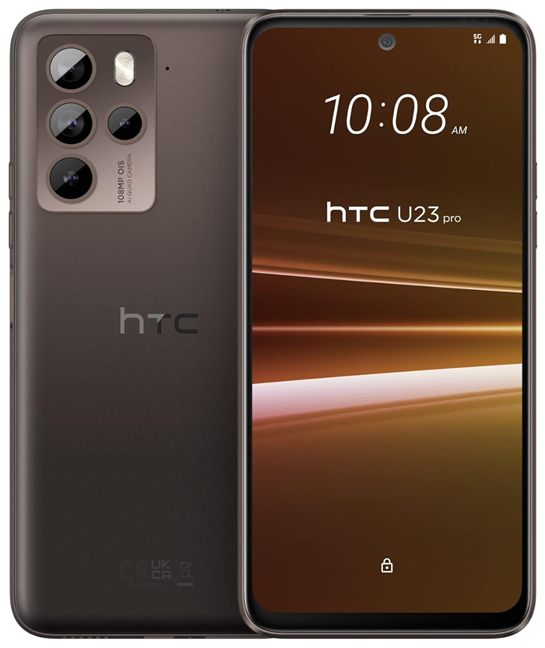
The HTC U23 Pro 5G launched in 2023
The same with HUAWEI. I still own and use a HUAWEI P30, which is a brilliant smartphone, but after being banned from using Google services, HUAWEI took a massive hit, which directly affected their products. And although I absolutely loved my P30, I’m afraid that I’ll never buy another HUAWEI device again. And that’s the thing: unlike Apple, many excellent brands in the Android smartphone market can fade out, be bought, or simply disappear, leaving fans like me with a bad case of nostalgia. And the list doesn’t stop here: does anyone remember LG or Nokia?
Why is Android so bad?
If having flaws is human, when it comes to imperfections, Android devices are as human as it gets. But they are also amazing devices that deliver to us the combined knowledge of all humankind. So, while I pointed out some of the issues they have, there’s no denying that they do wield a positive impact on our lives. What about you? Are you on Team Android, enjoying your quirky Android smartphone? Or do you share the bittersweet sentiments I’ve laid in this article? Are there any features that you like or dislike in particular? Let me know in the comments; I’m curious about your experience with smartphones in general (including iPhones).


 28.02.2024
28.02.2024 